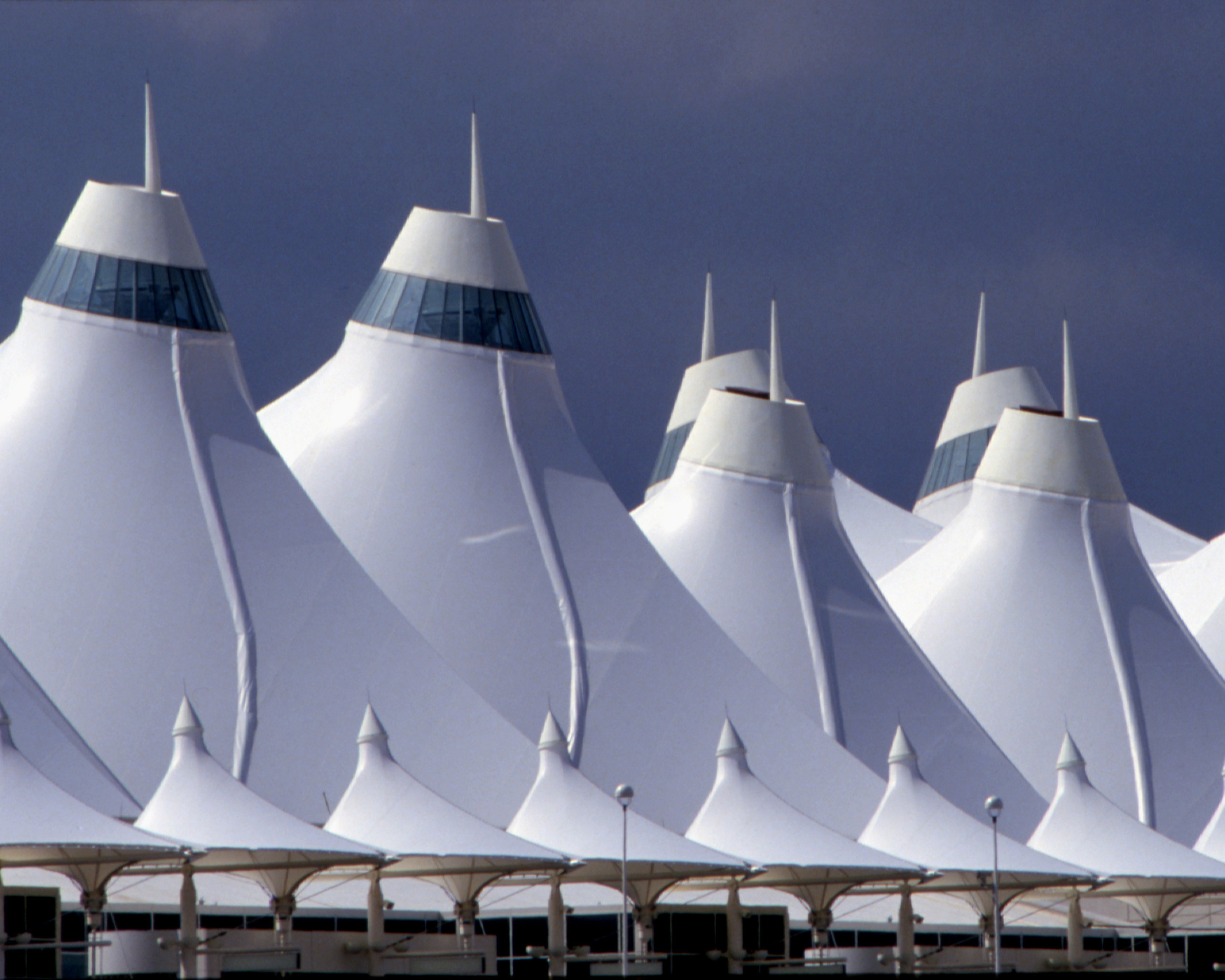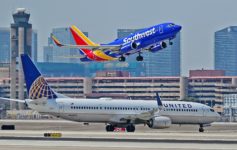United Airlines will restructure its schedule on Thursday at Denver International Airport, adding more than 60 mainline flights each week.
I’ve written about United’s domestic growth strategy and rebanking strategy before. Rebanking means clustering arrivals and departures together to maximize ease of connection. Just in time for Valentine’s Day, United’s latest move at Denver will see 420 departures from the airline each day starting next week, up from 376 a year ago.
United Airlines told pilots:
Rebanking provides enhanced flexibility for our customers and increases connection opportunities which ultimately provides greater access to more destinations.
But it also provides greater risk, especially at weather-prone Denver. United (or any airline that uses this rebanking strategy) will receive great praise when passengers smoothly connect and make it to their final destination with a shorter layover. But when a flight connection is missed, you can already hear the chorus of “how could they let me book such an unreasonable connection in the first place…”
United has already seen success at other hubs it introduced rebanking in. Andrew Nocella, United’s Chief Commercial Officer, told Flight Global that connections in Houston and Chicago are up 12% since rebanking was introduced. Nocella, along with President Scott Kirby, came to United from American Airlines where they successfully introduced flight rebanking in Chicago, Dallas/Fort Worth, Miami, and Philadelphia.
CONCLUSION
In practice, at least based upon my own experiences in Washington Dulles and Houston, rebanking is surprisingly efficient. I had great weather on my trips, but easily made a 35-minute connection in Washington Dulles. That’s something I would never have even considered in year’s past.
Again, this news sounds great in theory, but it is all about execution. United reported dismal operational figures in January, thanks in part to more domestic travel. We will know in the next month or two whether United can actually handle the new rebanking strategy in Denver.
> Read More: How United Reclaimed Its Rank As World’s #2 Airline
> Read More: United’s 2019 Growth Strategy: Target Hubs





While I am all for short and efficient connections, UA’s unique insistence on closing the flight 15 mins prior to departure often makes this a mess. If they would at least ease up and hold flights < 5 mins when they know there are people making their way from delayed arrivals, it would go a long way to a far smoother experience. I’ve recently experienced this at IAH where multiple people from my flight ran to a gate only to be told no by the GA. My 1k status meant nothing, and no compensation was offered for a problem created solely by the airline. It also happened to friends last week even though their arriving GA called to let the other GA know they were headed straight there. They even had a motorized cart awaiting them. They arrived just in time to watch the door close. Of course, the GAs are threatened with disciplinary action leading to termination if they attempt to hold a flight even for a minute. These sorts of policies apparently make sense to someone in an office somewhere.
+1. DEN. 45 min connection. 15 minutes held short of gate because the earlier plane would not leave. Ran 80 gates in term B. Told no time, (kicker) Then the GA invited late standby confirms to board.
Rude and uncooperative.
Silver for a few years.
It’s not really 80 gates. They don’t start at 0 and some of the UX gates are really all bundled together. At least you didnt have to change terminals as you do in ORD and IAH.
Um…yeah. B15-B95. With a giant atrium in the middle and a lengthy connector at the other end, escalator and all.
But that’s not the point, eh?
Congratulations on having to switch terminals. You’re the best!
Another problem with tight connections… When you are on a paid first class ticket and you miss your connecting flight, you will likely find that all first class seats are filled on the next flight. This happens because there are few first class seats anyway, and United has probably given away empty ones to frequent flyers. This happened to me, and the United agent tried to stuff me into an economy seat. I told her that I am tall, and I buy first class seats for a reason, so I would wait until I could get a first class seat. Now I make sure I have long connection times to help avoid this problem. Because tight connections often mess up, they are really only practical for people who are happy to sit in a small economy seat or else they don’t mind waiting a long time until a first class seat is available. To me, tight connections are too problematic to even consider.
Weather prone Denver? I fly through all United hubs often and Denver is the least weather impacted and easiest to navigate.
The biggest issue I see with this is when arriving on UX and having to green tag a bag. If my connection is under an hour then I bring a soft sided bag instead. I’ve had it take 15 minutes just to wait for the bag to be returned.
Longer layovers also mean more airport spend. Or maybe it doesn’t.
You seem to be lucky with this, Matthew. IAD is usually fine for tight connections. The airline that is truly abusing this though is American at DFW. It is simply absurd for them to be selling 35-minute connections at DFW while ALSO rigidly enforcing the 10-minute prior door closing rule. To deplane, walk to the sky train, walk to the gate one is usually looking at 25 minutes minimum (assuming you are even familiar with DFW). I would say that any connection 45 minutes or under at DFW is a 50/50 shot at best. To make it worse, the agents for your connecting flight have no empathy or any flexibility. They are often not even at the door any longer and down the jet bridge standing at the open plane door there with the gate locked up. Challenging them on this when they know full well that a bank of connecting passengers is running to the gate is met with the usual snide “write a letter” or “I just follow instructions.” To make it worse, on a number of occasions the plane ends up sitting there for 20 extra minutes anyway with no flexibility or ability for the agent to put you on.
So if Denver is gaining 60 flights, which airports are losing flights? The airlines always seem to forget that they’re creating winners and losers, and neglect to mention the losers. Also, banking can be risky anywhere, but in Denver? Weather could cause catastrophic problems, and United isn’t exactly known as a well-oiled machine to begin with.
UA is taking delivery of new 737s and used Airbuses with very few, if any, retirements. I believe those deliveries are funding the growth.
@Christian: I don’t believe there are losers here. UA is growing 5-7% this year.
I hope you’re right. Around ten flights a day just seems a lot to rev up out of the blue. I guess that I’ve just become a bit cynical. I’d really love to be wrong.
I avoid Denver flight connections any time of the year and Chicago connections anytime in the winter. Houston and Dallas are far better for connections.
The problem with these tight connections is they rely on everything going 100% perfect at every step of the way. As someone else mentioned, if you’re in deep coach and connecting at DFW, you need anywhere from 15 minutes (if your connection is at an adjacent gate), to 30 (terminal that is farthest from you via the SkyLink) to get off and get to your next gate. Even the slightest hiccup guarantees a misconnect, and with AA and UA completely fixated on D0, there is a roughly 0% chance that the GA on your next flight will hold the door open even a minute or two to accommodate you. They really need to reconsider the focus on the D0 metric to make this work, especially from a customer satisfaction standpoint.